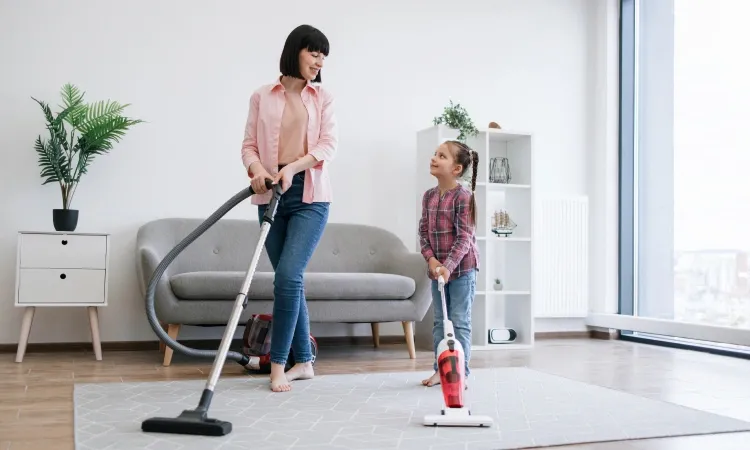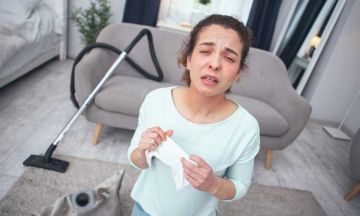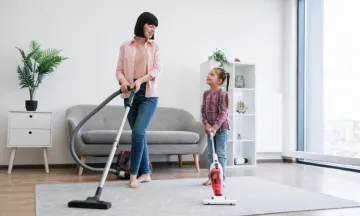Dust mite control: Tips for parents
Have you ever been in a situation like Samira? With the intention of cleaning the house she used a vacuum cleaner but little did she knew her 5-year-old daughter would start sniffling and coughing badly.
This happens because vacuum cleaner stirs up clouds of fine dust that can hang about in the air for up to eight hours and make allergy symptoms like sneezing, runny nose, and itchiness worse in children.
So, what can you do in such a situation? Should you not clean the house and leave it as it is?
Of course, not! There are few things which you can keep in mind if you have a kid at home who is allergic to dust.
Few tips to control dust mites –
-
Prevent build-up of dust
You would be surprised to know that over 50% of homes have at least 6 detectable allergens present. Even the cleanest homes have allergens lurking. While it is impossible to avoid dust mite allergens, there are ways you can prevent the build-up of dust in the home. Regularly clean surfaces and window blinds where dust collects using a damp cloth. Clean all non-carpeted floors at least once a week with a damp mop. Reduce the number of items on which dust can build up, especially if they are difficult to clean e.g. piles of boxes or clothing, placing books in closed cases. Better you keep your child’s books in another room.
-
Reduce dampness in the home
House dust mites prefer warm, damp homes. Dampness can also lead to the growth of moulds which can cause an allergic reaction too. To reduce dampness, keep windows or vents in the kitchen and bathroom open during and after cooking, washing, and bathing. Avoid drying clothes indoors, especially in your kids’ room or living room. Air bedding before remaking beds.
-
Wash sheets in hot water
Use sheets, pillow covers, and curtains that can be washed at 60°C – that’s enough to kill dust mites. Make sure to wash them at least every two weeks.
-
Bedding and soft toys
Do you know the favorite place of dust mites? Well, they love mattresses, pillows, and soft toys as much as you do. Since they don’t ask much for the living, they feed on any protein that comes their way and finds easy pickings in the dead skin scales that humans shed every day. To reduce the number of dust mites, avoid feather or down pillows. Choose the bedding made with synthetic materials instead. Cover mattresses and pillows with mite-proof covers. Keep the soft toys away from the bed. You can wash them in hot water (if they don’t contain batteries) and then dry on your dryer’s highest setting. You can also seal the toys in a plastic bag and put them in the freezer for 6 hours to kill the house dust mites.
-
Vacuum clean once or twice a week
Vacuum and dust your home (especially your child's bedroom) often - at least once a week. Some allergens are so small that they pass right through a regular vacuum filter. That means that every time you vacuum, you could be taking the dust off the floor and shooting it in the air, where your child could breathe in. Therefore, make sure your vacuum has a HEPA filter and you use a damp cloth to avoid spreading dust mite particles in the air.
If you have done as much as you can to reduce dust mites in your home and your child is still having an allergic reaction, you may benefit from getting allergy treatment in homeopathy. Our homeopaths can provide a customized treatment plan for your child’s allergic reaction to dust. To increase the treatment outcome and provide you a long-term solution for allergies, our homeopaths also suggest a few healthy lifestyle changes and appropriate dietary advice.
You can consult our homeopathy experts for allergies treatment online or by booking an appointment: https://www.drbatras.com/book-an-appointment




